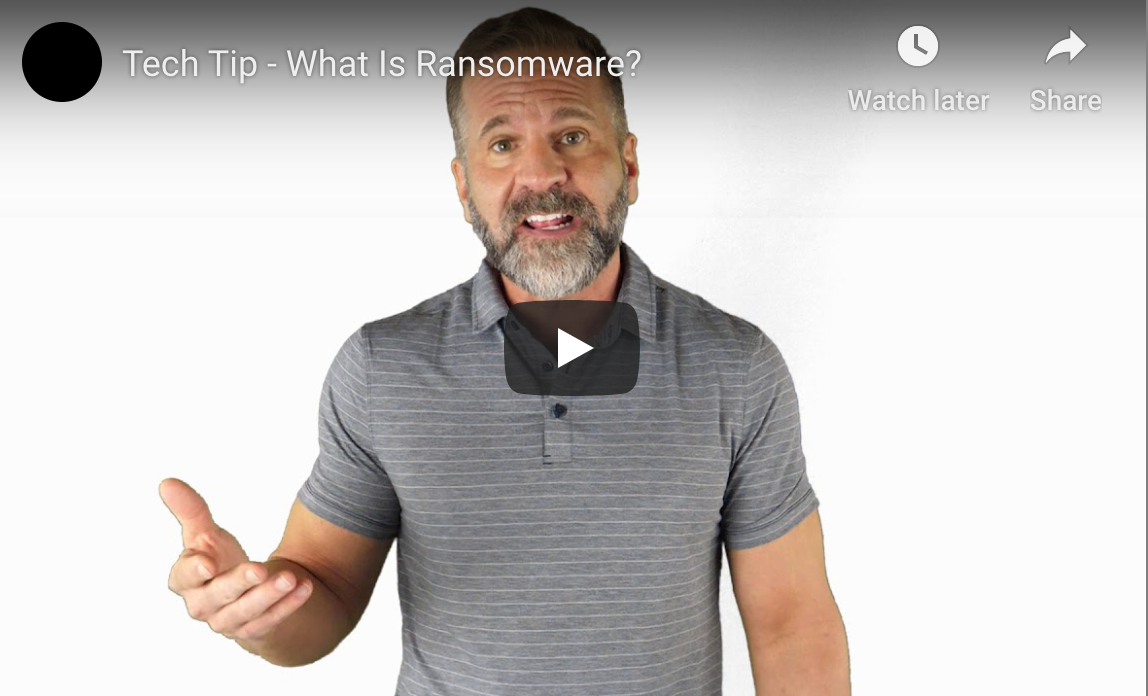What Is Ransomware: 5 Tips To Protect Your Business
Ransomware can damage and take a heavy financial toll on your business. What is ransomware and 5 tips you can take to protect your business today?
For businesses and organizations of all types, the Internet represents great promise and risk, with risk in the form of cyberattacks. Of the different kinds of cyber attacks, ransomware, in particular, can be very damaging exacting a heavy financial toll on you and your business.
What is ransomware?
Ransomware is a type of malicious software designed to block access to your system until a ransom is paid. The reason they are dangerous and damaging is that even if you pay, there is no guarantee that you will get your system back. There are many stories of organizations paying their ransom, receiving nothing in return, and dealing with the loss of their data.
What happens in a ransomware attack?
In a ransomware attack, hackers gain access to your system through a malicious link or vulnerability attacking your network and backup files. Their mission is to render your back up files and folders useless so that you cannot gain access to your system files. Once incapacitated, the hackers contact you demanding a ransom, often in the form of cryptocurrency such as Bitcoin, believing that they are protected behind a shield of anonymity.
What types of organizations are targeted?
One would think that the organizations most vulnerable to a ransomware attack are small to medium-sized. The truth is that any organization that is not taking its cybersecurity seriously is at risk of a ransomware attack. Cybersecurity, for many, is often an afterthought until it happens to them. This includes businesses, non-profits, and government agencies of all sizes.
How can I protect my business from ransomware attacks?
While there are things you can do to minimize the chance that you will be a victim of a ransomware attack, the risk cannot be entirely eliminated. However, there are steps you can take to minimize the risk of an attack. If ever you needed a reason to take action, consider that ransomware prevention is a fraction of the cost to recover from a ransomware attack. Never mind the financial cost. Consider that for most businesses, their IT system is the brains and nerve center of their operation storing customer lists, financial information, and everything else.
Some of the things that you can do to prepare for a ransomware attack include:
Having a business continuity plan
A business continuity plan consists of daily backups of all of your data, both locally, and to the cloud.
Invest in the best tools and equipment
You don’t want to cut corners when it comes to your cybersecurity. For that reason, you want to invest in the best tools and equipment. This includes anti-virus software, anti-malware, DNS filtering, and very strong firewalls.
Never click an unknown without knowing the sender
The average office worker receives 121 emails per day. As a result, it is easy to see how you or an employee can overlook a malicious email. While most people would click a link or download a file without a second thought, never open an attachment or click a link without verifying the authenticity of the sender. If you have any reservations about an email or sender, delete the email.
Keep up on your training
Cybersecurity is evolving quickly. Unfortunately, so are the hackers. As a result, you and your staff need to keep on top of your cybersecurity awareness training to stay ahead of the curve.
Work with a competent IT company
Make sure that your IT services company knows what they are doing. Many companies are marketing themselves as cybersecurity experts. As a result, you need to do your research to assess their cybersecurity skills.
There are more things that you can be doing to protect yourself from ransomware attacks. However, this is a good start for what you can do today. The other thing is to contact us to discuss a personalized ransomware prevention program for your business.
![]()









